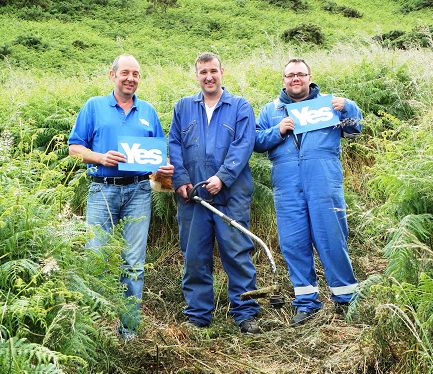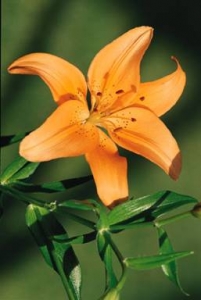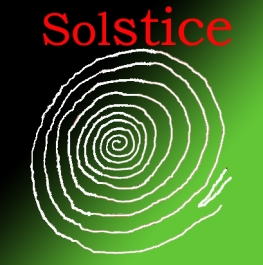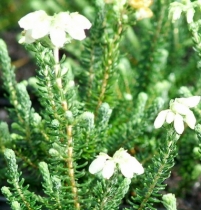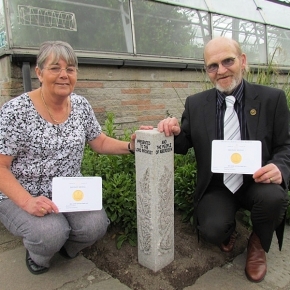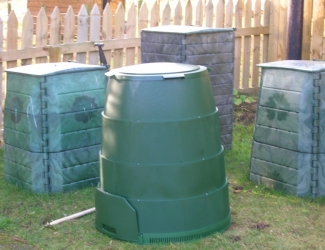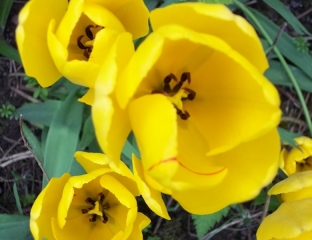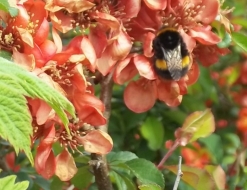By Suzanne Kelly.
Spring has sprung and the weather’s glorious: it’s garden time. Some of us will take strimmer, mower and other power tools to our gardens until there isn’t a weed in sight. But before you chop down that tree or cut all of your long grass, here’s something to consider. Aberdeen City and shire are losing green space at an unbelievable rate; new housing developments are planned for virtually every patch of open land.
We will have to wave goodbye to the meadows near Loirston Loch, and Union Terrace Gardens are a stone’s throw from being filled in with god-knows-what kind of shopping mall/parking area ( ‘it’s only full of grass’ says Councillor John Stewart ). A massive bypass will cut through pristine shire at some future point and nine hundred homes will be built by future president Trump on what was once a wildlife paradise.
If habitat loss weren’t enough of a problem, climate change is most definitely driving many species into areas they have not previously inhabited.
Where will wildlife go when the habitats go? It’s a wonder we still have any wildlife at all. Consequently, please consider making part of your garden a wildlife haven.
The long grass you are about to strim is likely providing food and shelter for insects including some of our rarer butterflies and moths. The tree you might prune or cut down is cleaning your air, housing birds, and feeding a host of creatures you might not have considered. If you don’t have to turn your grass into a concrete patio ( sorry, I meant ‘vibrant space’ not concrete patio ), you are again helping the birds by giving them area to look for worms. Bird lovers might want to keep a bird feeder going all year round ( which is current RSPB advice ) and having a small bird bath and a source of drinking water.
My back garden is probably an eyesore in the eyes of my much neater neighbours. There are large sections of dense herbs growing as well as dandelions and plenty of long grass. On the whole, it’s totally none-suburban. On the other hand, it supports a fairly large bee population (there are a few varieties), many kinds of birds, a few butterflies and moths, and one year even a toad took refuge under a tree.
I don’t clear dead leaves and debris away at the first sign of warm weather as there are as likely as not insects and eggs dependent on this temporary mess.
There are many spaces for all kinds of creatures to live, breed and hibernate in a garden like mine and it doesn’t cost all that much in terms of time and money. In return I get fresh herbs, fruits, amazing flowers – and the knowledge that I’m playing some small part in helping wildlife.
Even if you don’t have much time to devote to gardening ( I definitely don’t ), it’s not hard to grow a few herbs and flowers which will help our dwindling bee, moth and butterfly populations. There are nurseries such as Poyntzfield on the Black Isle ( http://www.poyntzfieldherbs.co.uk/ ) which can help. They provide plants which are increasingly rare in the wild, plants native to Scotland and exotics from around the world. Poyntzfield’s outdoor plants are particularly hardy with many of them specifically cultivated to manage in our cold winters.
When buying plants and seeds, you might also want to consider that the EU have just virtually banned herbal remedies – this could be a good time to start your own backyard collection of traditional medicinal plants such as Echinacea, St John’s Wort, Valerian and so on. Again, Poyntzfield is a great resource for medicinal plants.
The news has been filled with stories about the declining bee population worldwide.
If you can believe it, there are ‘bee rustlers’ stealing bee colonies from bee keepers in parts of Asia; thankfully this is not a problem we have just yet in the Deen. The bees in my garden seem to gravitate towards sage blossoms, quince flowers, roses, lilac and a variety of herbs and heathers. It is best to have flowers supplying nectar for as much of the year as possible.
A good nursery or website will tell you what plants flower when, and will be happy to help pick plants for your particular garden.
Small bee habitats can be bought inexpensively or made from hollow reeds bound together (think of those godawful Pan’s pipes that fake South American bands play).
When plants are no longer flowering but bees are still around, leaving sugary water in shallow dishes makes a nectar substitute.
Butterflies thrive on nettles, so if you have a corner where the nettles won’t bother you too much, you’d be helping the butterfly population by growing some (you might even like to try making some nettle soup). If nettles are a bit too extreme for you, then you might consider buddleia. Poyntzfield recommend hyssops, mints, rosemary, thymes, lavender and basil for bees and butterflies.
Edible fruiting plants will benefit wildlife as well as you and your family – strawberries, blaeberries, raspberries (which need attention and isolation so that they don’t take over) can with little effort provide you with fresh fruit for most of the summer and early autumn. When you serve a meal containing herbs you’ve grown or fruits you’ve grown there’s a certain amount of satisfaction to be found.
As well as Poyntzfield, you might want to visit the Organic Growers’ Alliance website at http://www.organicgrowersalliance.co.uk/links There are seeds for sale, courses, and information for all kinds of gardeners from the new to the experienced.
Whatever you choose to do in your garden, please think about attracting wildlife – they need all the help they can get.
